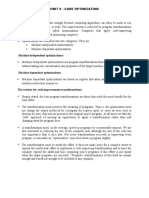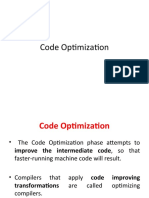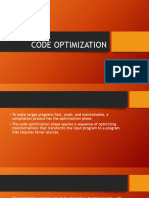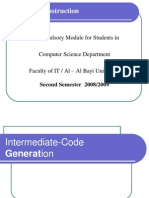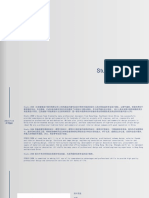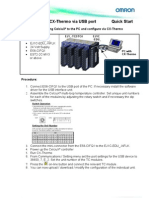0% found this document useful (0 votes)
30 views18 pagesUnit 5 2 Optimization
The document discusses various optimization techniques in programming, focusing on peephole optimization, transformations of basic blocks, and machine-independent optimizations. Key methods include eliminating redundant instructions, optimizing flow of control, and performing algebraic simplifications. Additionally, it covers function-preserving transformations and loop optimizations to enhance code efficiency without altering its functionality.
Uploaded by
Aman RajCopyright
© © All Rights Reserved
We take content rights seriously. If you suspect this is your content, claim it here.
Available Formats
Download as PPTX, PDF, TXT or read online on Scribd
0% found this document useful (0 votes)
30 views18 pagesUnit 5 2 Optimization
The document discusses various optimization techniques in programming, focusing on peephole optimization, transformations of basic blocks, and machine-independent optimizations. Key methods include eliminating redundant instructions, optimizing flow of control, and performing algebraic simplifications. Additionally, it covers function-preserving transformations and loop optimizations to enhance code efficiency without altering its functionality.
Uploaded by
Aman RajCopyright
© © All Rights Reserved
We take content rights seriously. If you suspect this is your content, claim it here.
Available Formats
Download as PPTX, PDF, TXT or read online on Scribd
/ 18









